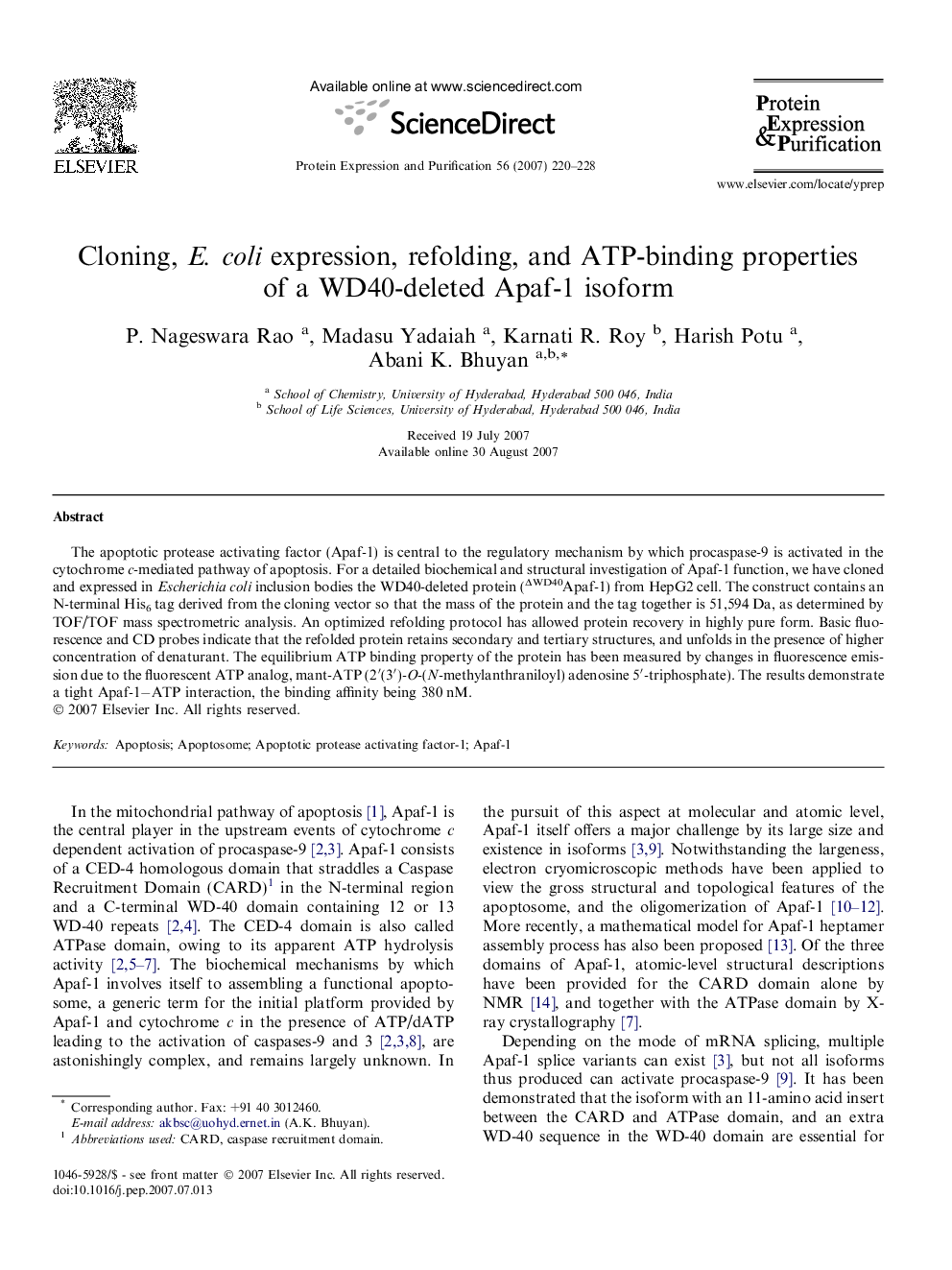| Article ID | Journal | Published Year | Pages | File Type |
|---|---|---|---|---|
| 2021746 | Protein Expression and Purification | 2007 | 9 Pages |
The apoptotic protease activating factor (Apaf-1) is central to the regulatory mechanism by which procaspase-9 is activated in the cytochrome c-mediated pathway of apoptosis. For a detailed biochemical and structural investigation of Apaf-1 function, we have cloned and expressed in Escherichia coli inclusion bodies the WD40-deleted protein (ΔWD40Apaf-1) from HepG2 cell. The construct contains an N-terminal His6 tag derived from the cloning vector so that the mass of the protein and the tag together is 51,594 Da, as determined by TOF/TOF mass spectrometric analysis. An optimized refolding protocol has allowed protein recovery in highly pure form. Basic fluorescence and CD probes indicate that the refolded protein retains secondary and tertiary structures, and unfolds in the presence of higher concentration of denaturant. The equilibrium ATP binding property of the protein has been measured by changes in fluorescence emission due to the fluorescent ATP analog, mant-ATP (2′(3′)-O-(N-methylanthraniloyl) adenosine 5′-triphosphate). The results demonstrate a tight Apaf-1−ATP interaction, the binding affinity being 380 nM.
